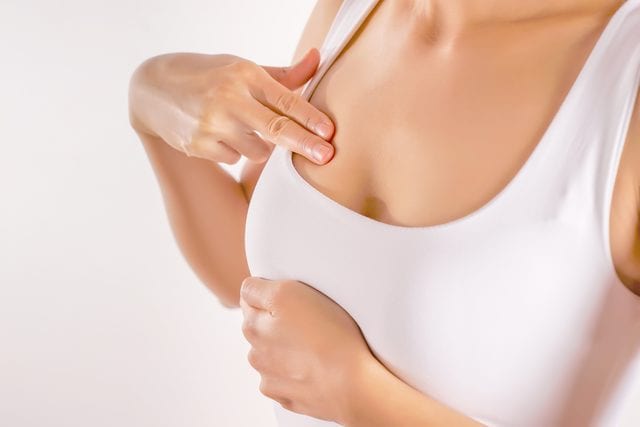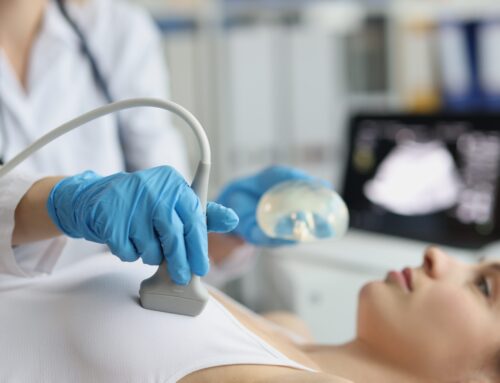If you are thinking of getting your implants removed for several reasons, your brain may flood with questions regarding how painful or complicated the procedure can be. Well, you are not alone. One of the many questions that every patient tends to ask their surgeons is about the severity of pain following breast explant surgery.
So, let’s dig in to find answers.
Why Women Choose Breast Explant Surgery?
Many women like you who have earlier had breast augmentation or reconstructive breast surgery opt-in for an explant for distinct reasons. Whatever the cause might be, breast explantation involves either removing your breast implants along with any capsules (scar tissue) around them or replacing them with a new one.
The most common reasons why women choose breast explant surgery are:
• Lifestyle changes.
• Complications.
• Leakage of implant, capsular contracture (scar tissue around the implant tightens), resulting in painful or misshaped breasts.
• Breast implant illness.
• Replacing them with a newer or better model available.
• Cosmetic reasons: Upsizing or Downsizing
• Breast cancer.
• Shape change and lowered positioned breasts.
• Some women prefer smaller and natural-looking breasts over their previous implants.
How Painful is Breast Explant Surgery?
Breast explant surgery is a painful procedure, and the pain level varies from mild in some cases to severe, among others. The pain may be stinging, shooting, or stabbing in nature. An experienced surgeon like Dr. Barrett can help you remain pain-free and relaxed before, during, and after the surgery.
Intensity of The Pain
Most patients report severe pain in the first few days after the surgery and mild to moderate discomfort a few weeks following, with the pain subsiding with time. In rare cases, the pain lasted longer than a few months.
How Long Does the Pain Stay After Explant Surgery?
Within hours after the surgery, you may feel sensitization, numbness, tingling, swelling, bruising, inflammation, and pain that may heal without intervention. The pain is manageable by prescribing potent pain medication. All symptoms tend to disappear within 6-9 weeks.
What Other Complications to Expect Besides Pain?
 On top of pain, there are other complications you may have to manage after an explant. During your breasts’ healing journey, it is normal to have asymmetrical breasts for a while due to bruising and swelling. Luckily, many patients can achieve symmetrical breasts after complete recovery.
On top of pain, there are other complications you may have to manage after an explant. During your breasts’ healing journey, it is normal to have asymmetrical breasts for a while due to bruising and swelling. Luckily, many patients can achieve symmetrical breasts after complete recovery.
Depending on your case, the localized swelling disappears from 3 weeks to 3 months. Fortunately, the use of compressive garments helps with swelling. It may take several months to achieve complete nerve regeneration and normal sensitivity in the breast area in rare cases.
Explant surgery and post-complications are like an emotional rollercoaster ride filled with highs and lows. You may need more than just physical support and, most of all, patience. But do not worry; you will eventually get back to your routine soon.
Who Is at A Higher Risk for Complications After Surgery?
There are a few factors that might affect the intensity of the pain you may experience post-operatively.
• Being overweight
• Having larger implants
• Position of your implant
• An increased build-up of internal scar tissue
How Long Does It Take to Recover?
The recovery duration is different for every patient, depending mostly on your implant history and body’s response. After the explant surgery, you will be expected to return to normal activities within a week and the gym within six weeks. In some cases, complete healing can take up to one year.
7 Simple Tips to Follow After an Explant
Scars take time to heal. These tips may help you recover sooner rather than later:
1. Keep your arms close to the breasts.
2. Avoid strenuous physical activity but try to walk regularly.
3. Wear a compression bra or compression band as recommended to reduce inflammation.
4. Protect the incision area from sunlight or any other radiation.
5. Keep the incision area dry and clean and follow Dr. Barrett’s advice on self-care of your wound.
6. Stop smoking during the healing time and discuss alternative options with Dr. Barrett if needed.
7. Avoid any physical contact with your breasts for at least four weeks after the procedure.
Follow your board-certified surgeon’s personalized advice and instructions is best for a speedy recovery and reliable results.






Leave A Comment